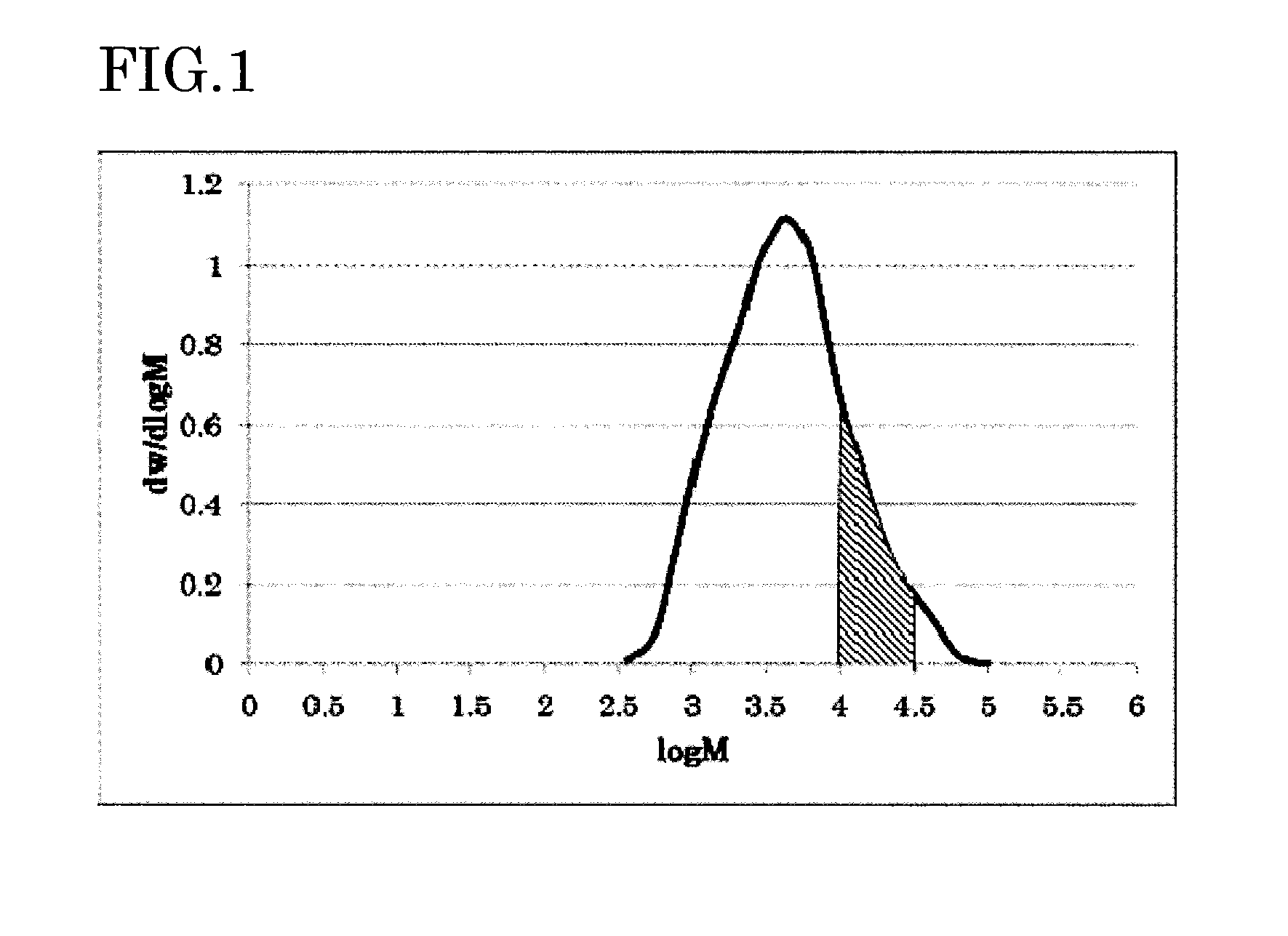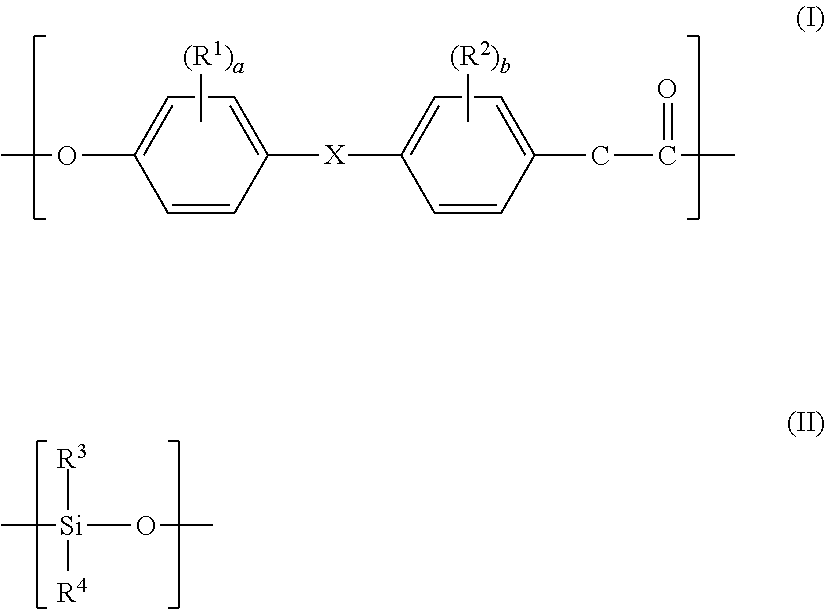Polycarbonate-polyorganosiloxane copolymer and method for producing same
- Summary
- Abstract
- Description
- Claims
- Application Information
AI Technical Summary
Benefits of technology
Problems solved by technology
Method used
Image
Examples
examples
[0115]The present invention is more specifically described by way of Examples. However, the present invention is by no means limited by these Examples. In each of Examples, characteristic values and evaluation results were determined in the following manner.
(1) Gel Permeation Chromatography (GPC)
[0116]The GPC measurement of the polyorganosiloxane was carried out under the following conditions.[0117]Test apparatus: TOSOH HLC 8220[0118]Measurement condition: TOSOH TSK-GEL GHXL-L, G4000HXL, G2000HXL[0119]Solvent: tetrahydrofuran (THF)[0120]Column temperature: 40° C.[0121]Flow rate: 1.0 ml / min[0122]Detector: RI[0123]Injection concentration: 0.2 w / v %[0124]Injection amount: 0.1 ml
[0125]Standard polystyrene manufactured by Tosoh Corporation was used to obtain a calibration curve.
[0126]The molecular weight distribution of a polyorganosiloxane in a polycarbonate-polydimethylsiloxane (PC-PDMS) was measured as described below. 3.9 g of the resultant PC-PDMS copolymer flake was added to methyl...
production example
[0130]To a 5.6 mass % aqueous sodium hydroxide, 2,000 ppm of sodium dithionite with respect to bisphenol A (BPA) (to be dissolved later) was added. BPA was dissolved in the solution so that the concentration of BPA became 13.5 mass %. Thus, a solution of BPA in aqueous sodium hydroxide was prepared. The solution of BPA in aqueous sodium hydroxide, methylene chloride, and phosgene were continuously passed through a tubular reactor having an inner diameter of 6 mm and a tube length of 30 m at flow rates of 40 L / hr, 15 L / hr, and 4.0 kg / hr, respectively. The tubular reactor had a jacket portion and the temperature of a reaction liquid was kept at 40° C. or less by passing cooling water through the jacket. The reaction liquid which had exited the tubular reactor was continuously introduced into a baffled vessel-type reactor having an internal volume of 40 L provided with a sweptback blade, and then the solution of BPA in aqueous sodium hydroxide, a 25 mass % aqueous sodium hydroxide, wat...
example 1
[0132]15 Liters of the polycarbonate oligomer solution produced as described above, 8.3 L of methylene chloride, 393 g of an allylphenol terminal-modified polydimethylsiloxane (PDMS) [having an average chain length n of 75, a log(M) at which dw / d log(M) became maximum of 3.8, and a ratio of a value obtained by integrating the dw / d log(M) value over the log(M) range of from 4.0 to 4.5 to a value obtained by integrating the dw / d log(M) value over the entire range of the log(M) (hereinafter, in Examples, the ratio is sometimes referred to as “ratio of a log(M) of from 4.0 to 4.5”) of 24.4% (obtained by blending an allylphenol terminal-modified PDMS having an average chain length n of 34, a log(M) at which dw / d log(M) became maximum of 3.6, and a ratio of a log(M) of from 4.0 to 4.5 of 5.4%, and an allylphenol terminal-modified PDMS having an average chain length n of 92, a log(M) at which dw / d log(M) became maximum of 4.1, and a ratio of a log(M) of from 4.0 to 4.5 of 34.5%, at a mass ...
PUM
| Property | Measurement | Unit |
|---|---|---|
| Fraction | aaaaa | aaaaa |
| Fraction | aaaaa | aaaaa |
| Percent by mass | aaaaa | aaaaa |
Abstract
Description
Claims
Application Information
 Login to View More
Login to View More - R&D
- Intellectual Property
- Life Sciences
- Materials
- Tech Scout
- Unparalleled Data Quality
- Higher Quality Content
- 60% Fewer Hallucinations
Browse by: Latest US Patents, China's latest patents, Technical Efficacy Thesaurus, Application Domain, Technology Topic, Popular Technical Reports.
© 2025 PatSnap. All rights reserved.Legal|Privacy policy|Modern Slavery Act Transparency Statement|Sitemap|About US| Contact US: help@patsnap.com



